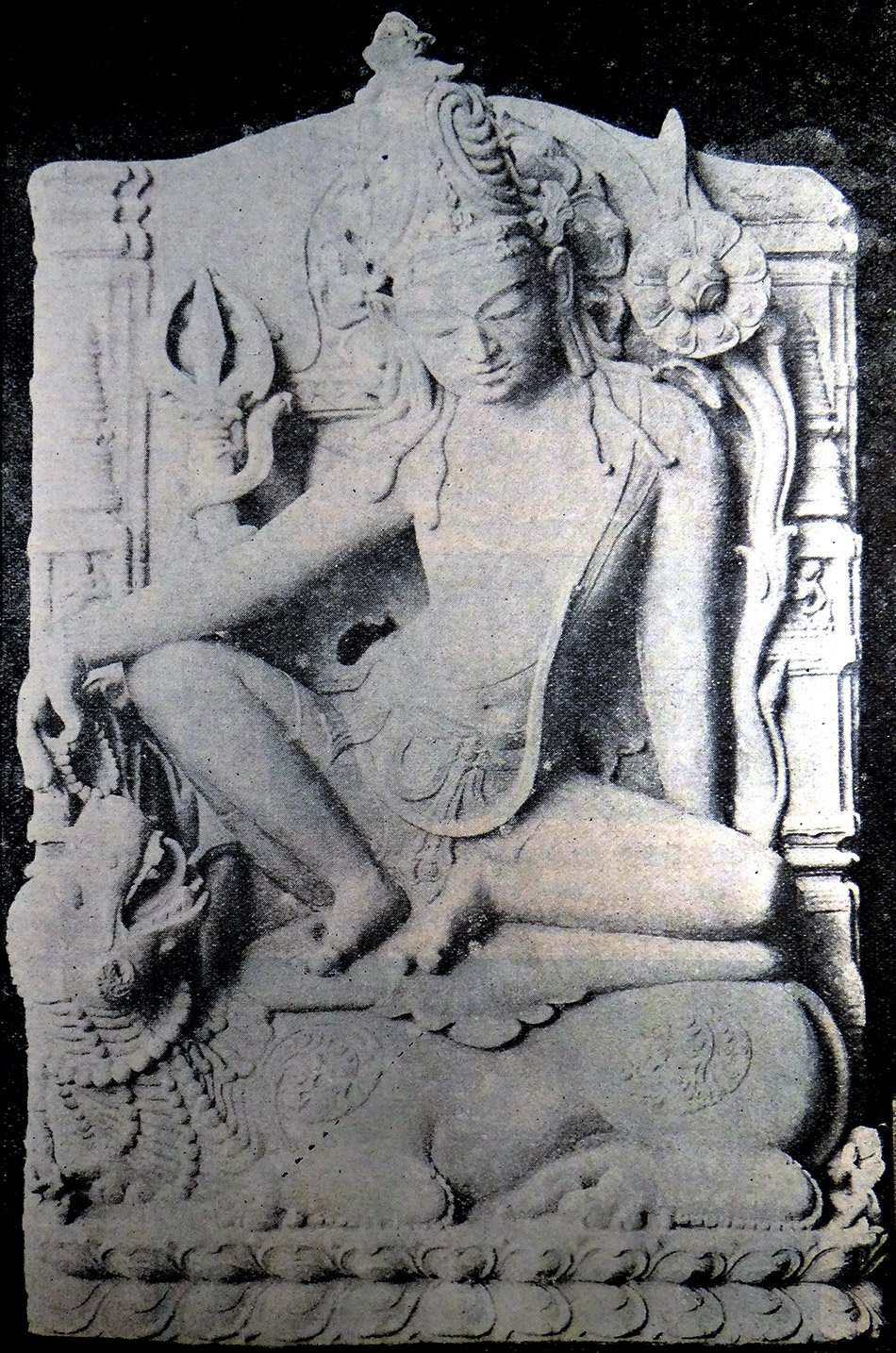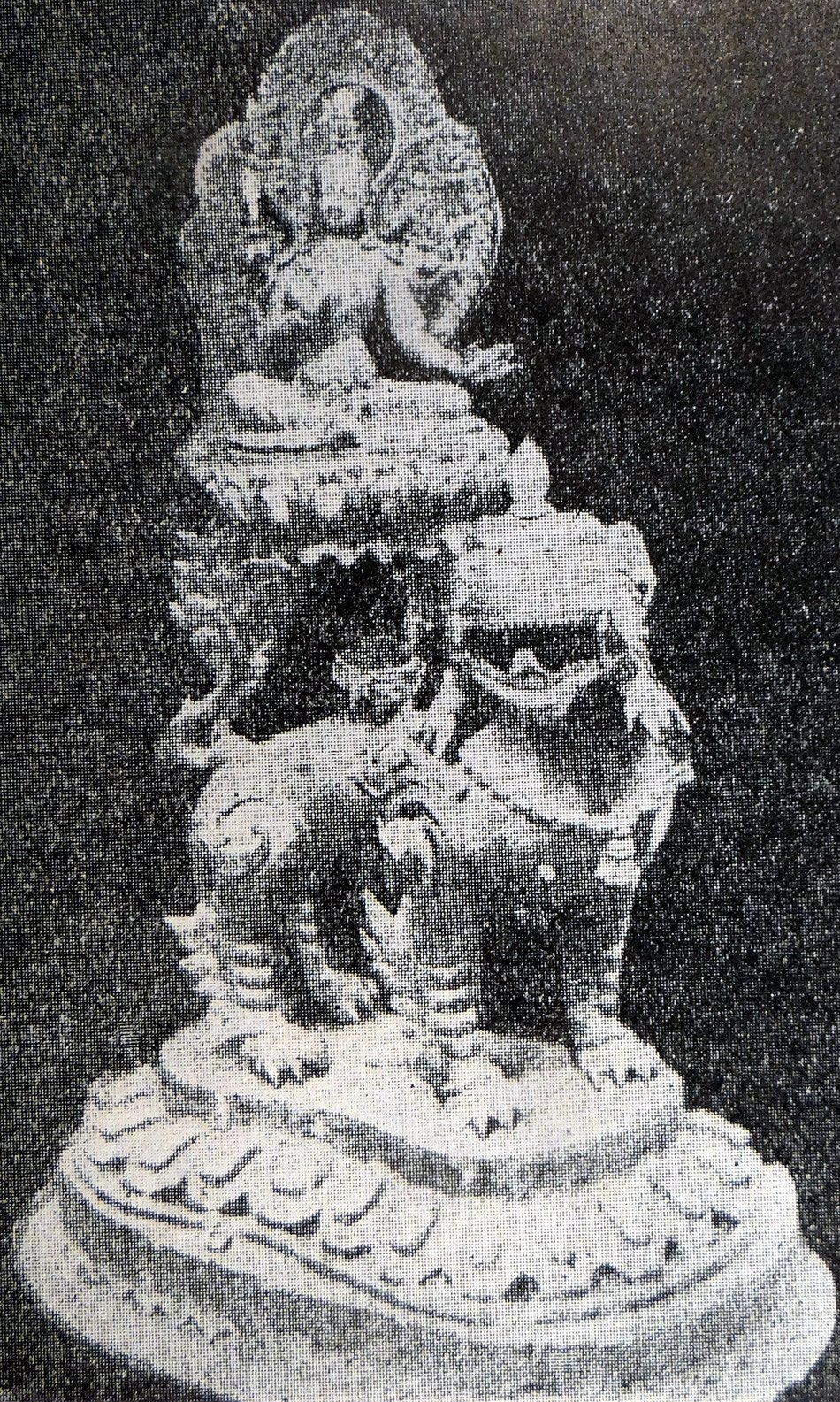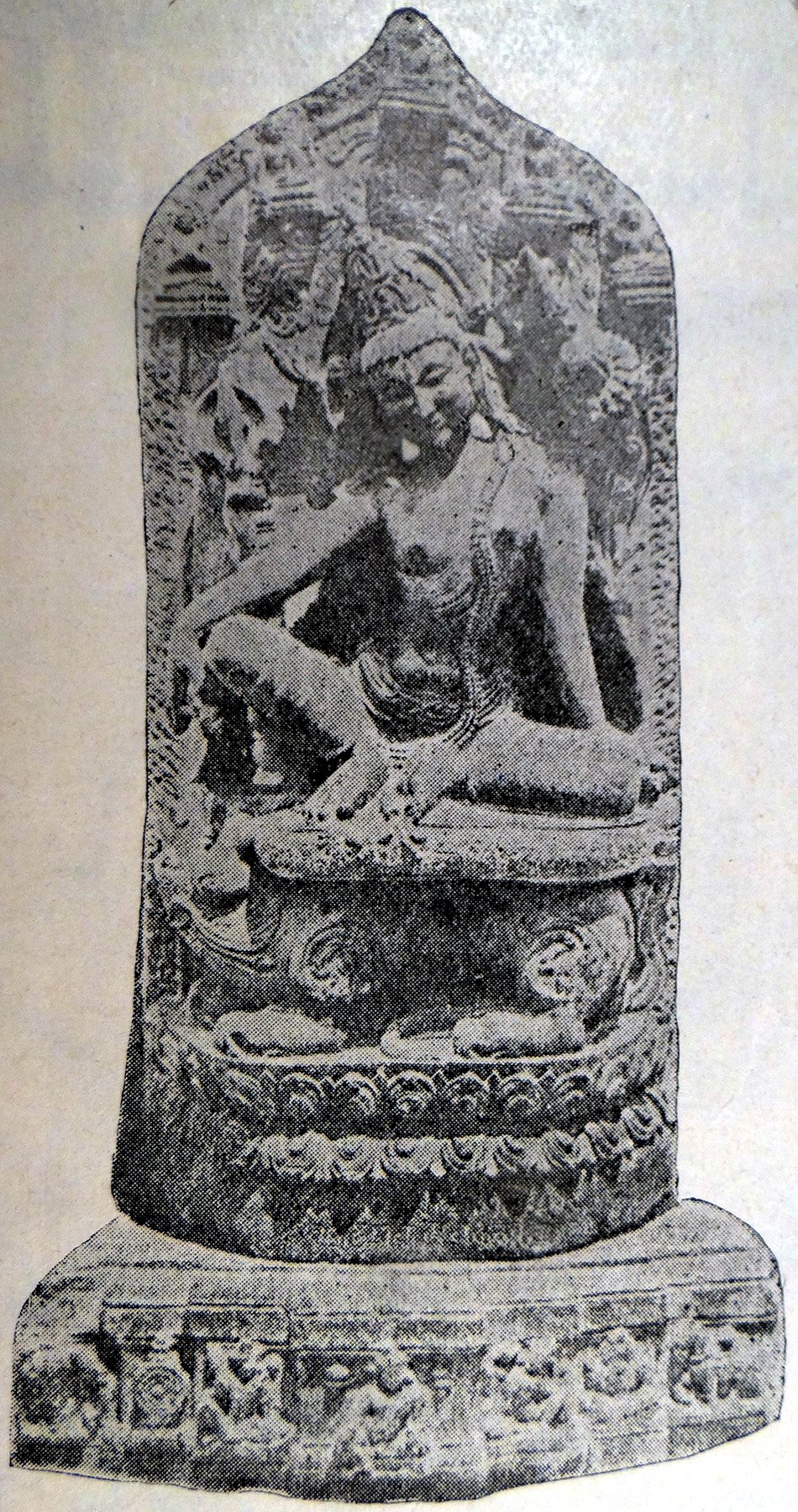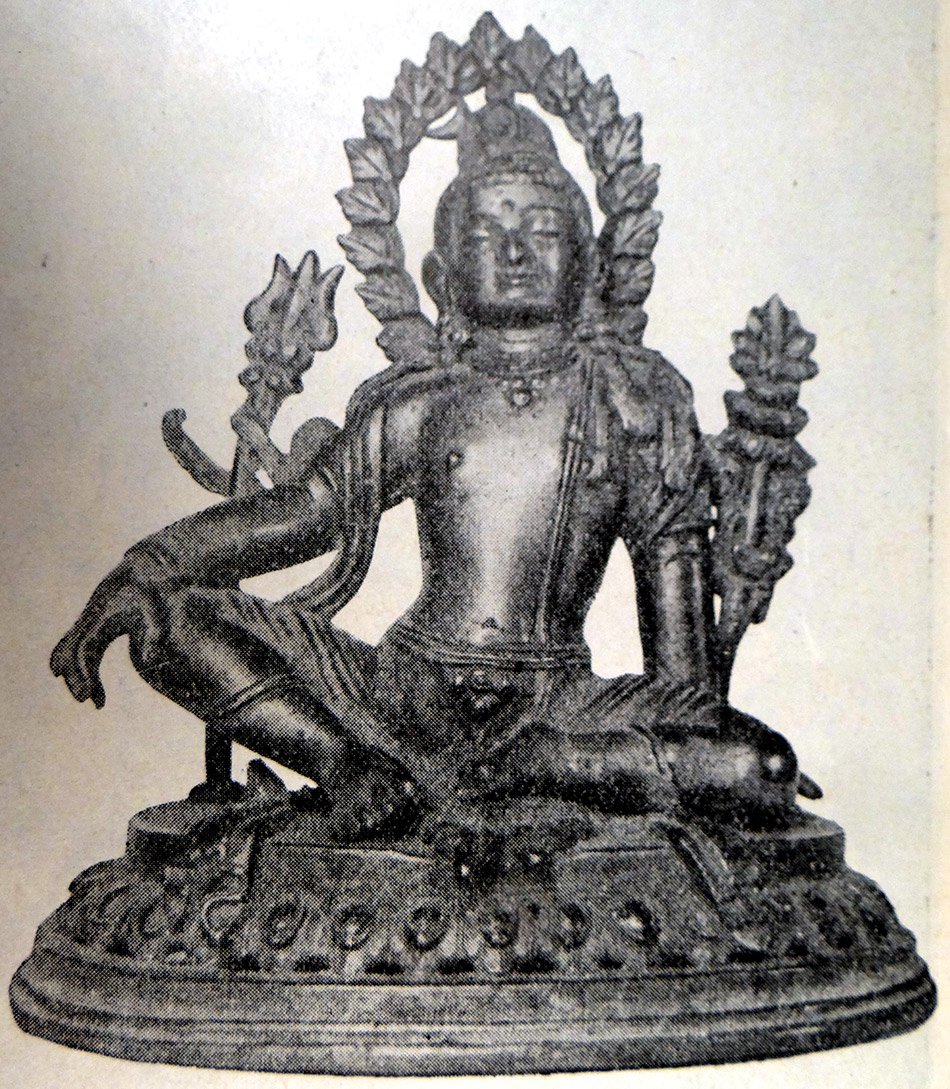The Indian Buddhist Iconography
by Benoytosh Bhattachacharyya | 1958 | 51,392 words | ISBN-10: 8173053138 | ISBN-13: 9788173053139
This page contains an iconography image of (Avalokiteshvara): Simhanada and represents figure 99-102 of the book Indian Buddhist Iconography, based on extracts of the Sadhanamala English translation. These plates and illustrations represent either photographs of sculptures or line-drawing reproductions of paintings or other representations of Buddhist artwork.
Figure 99-102 - (Avalokiteśvara): Siṃhanāda
 Figure 99: Siṃhanāda (Mahoba) |
 Figure 100: Siṃhanāda (Nepal) |
 Figure 101: Siṃhanāda (Mahoba) |
 Figure 102: Siṃhanāda (Nepal) |
Four Sādhanas also are devoted to the worship of Siṃhanāda, who is regarded by the Mahāyānists as the curer of all diseases. He is one of the most popular forms of the Bodhisattva Avalokiteśvara, and his images are by no means rare in India, At Patan in Nepal, all the more important monasteries have two images of Siṃhanāda, either in stone or in bronze, on either side of the staircase leading to the sanctum. He appears in many forms only slightly different from one another.
Images of Siṃhanāda are by no means rare and are rather easy to identify because of clear-cut symbols. Fig. 99 is the famous image of Siṃhanāda from Mahoba carrying a rosary. Fig. 100 is a Nepalese statue at the gate of a monastery. Fig. 101 illustrates a sculpture from Magadha, while Fig. 102 is a small bronze of Siṃhanāda without the lion, from Nepal. Siṃhanāda wears no ornaments and this feature of his images differentiates him from Mañjuśrī when he is on the back of a lion.
Siṃhanāda is popular both in Tibet and in China.
Colour: white;
Āsana: mahārājalīla;
Vāhana: lion;
Symbols: (i) sword on lotus, (ii) triśūla entwined by a snake;
